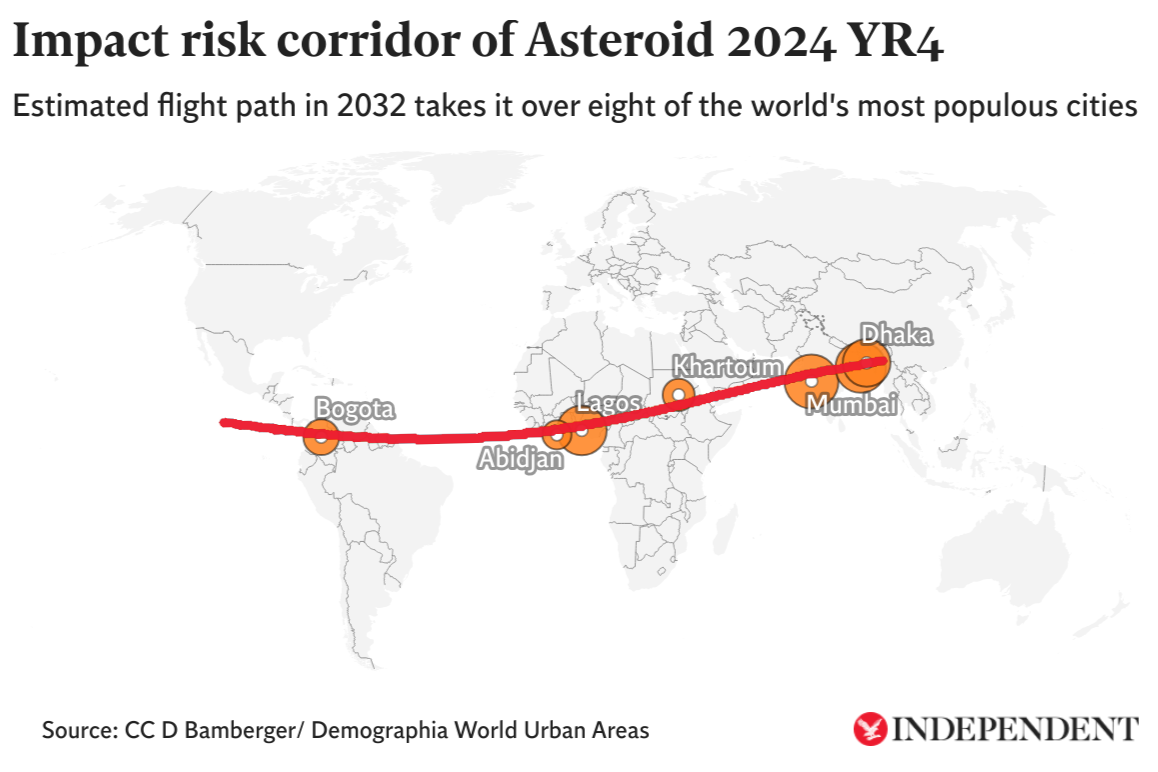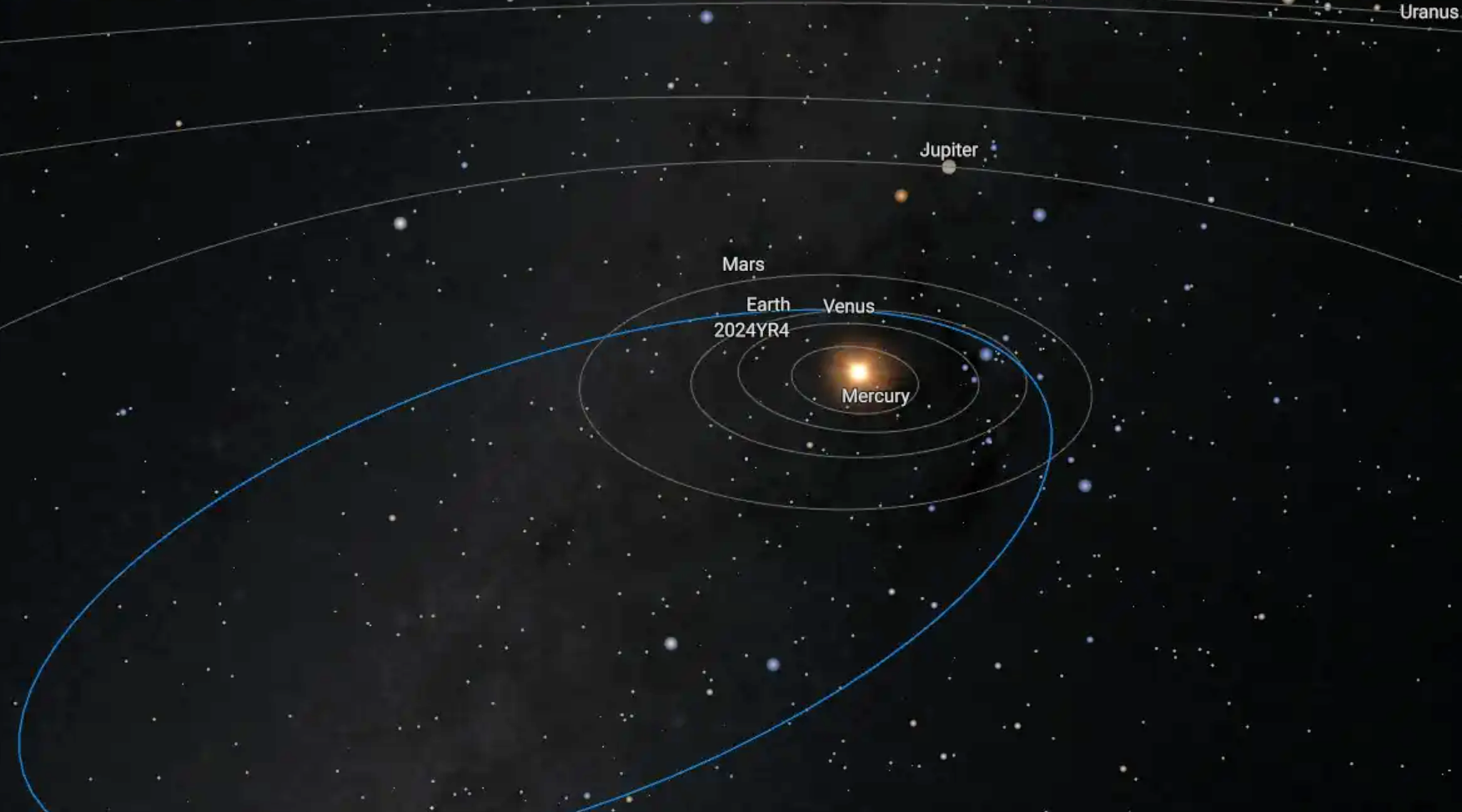The estimated flight path of an asteroid the size of Big Ben’s tower will see it pass over some of the world’s most populous cities, according to the latest data from Nasa.
Asteroid 2024 YR4 currently has a 2.6 per cent chance of hitting Earth on 22 December, 2032, making it the biggest extra-terrestrial threat in more than two decades.
Scientists have calculated that the impact risk corridor of the space rock stretches eastwards from the Pacific Ocean, over South America, the Atlantic Ocean, Africa, the Middle East and into Asia.

This trajectory takes it over eight of the top 100 most populated cities in the world: Bogotá, Abidjan, Lagos, Khartoum, Mumbai, Kolkata and Dhaka.
The urban area of these cities alone have a combined population of more than 110 million, with the destructive potential of Asteroid 2024 YR4 equivalent to 8 million tons of TNT – roughly 500 times the power of the atomic bomb dropped on Hiroshima.
The impact zone would have a radius of around 50 kilometres (30 miles), though Nasa and other space agencies are hopeful that the asteroid does not pose a serious threat to Earth.

Nasa has already successfully tested technologies to deflect asteroids, most notably during its Double Asteroid Redirection Test (DART) mission in 2022, which redirected an asteroid twice the size of Asteroid 2024 YR4.
Another asteroid-redirection test undertaken by China is set to take place in 2027 on a smaller asteroid.
Other space agencies are also working on contingency measures for the asteroid, with two UN-endorsed response groups already working to narrow down its trajectory and prepare any necessary intervention.
Ground-based observations of Asteroid 2024 YR4 will continue to be made while it is still visible from Earth until April, before it becomes to faint to view until June 2028.
Nasa is also training the biggest telescope ever made on the asteroid in an attempt to better understand its trajectory, size and composition.
“Nasa’s James Webb Space Telescope will observe the asteroid in March 2025,” Moly Wasser from the US space agency wrote in a blog post earlier this month.
“As more observations of the asteroid’s orbit are obtained, its impact probability will become better known. It is possible that asteroid 2024 YR4 will be ruled out as an impact hazard, as has happened with many other objects that have previously appeared on Nasa’s asteroid risk list.
“It is also possible its impact probability will continue to rise.”







